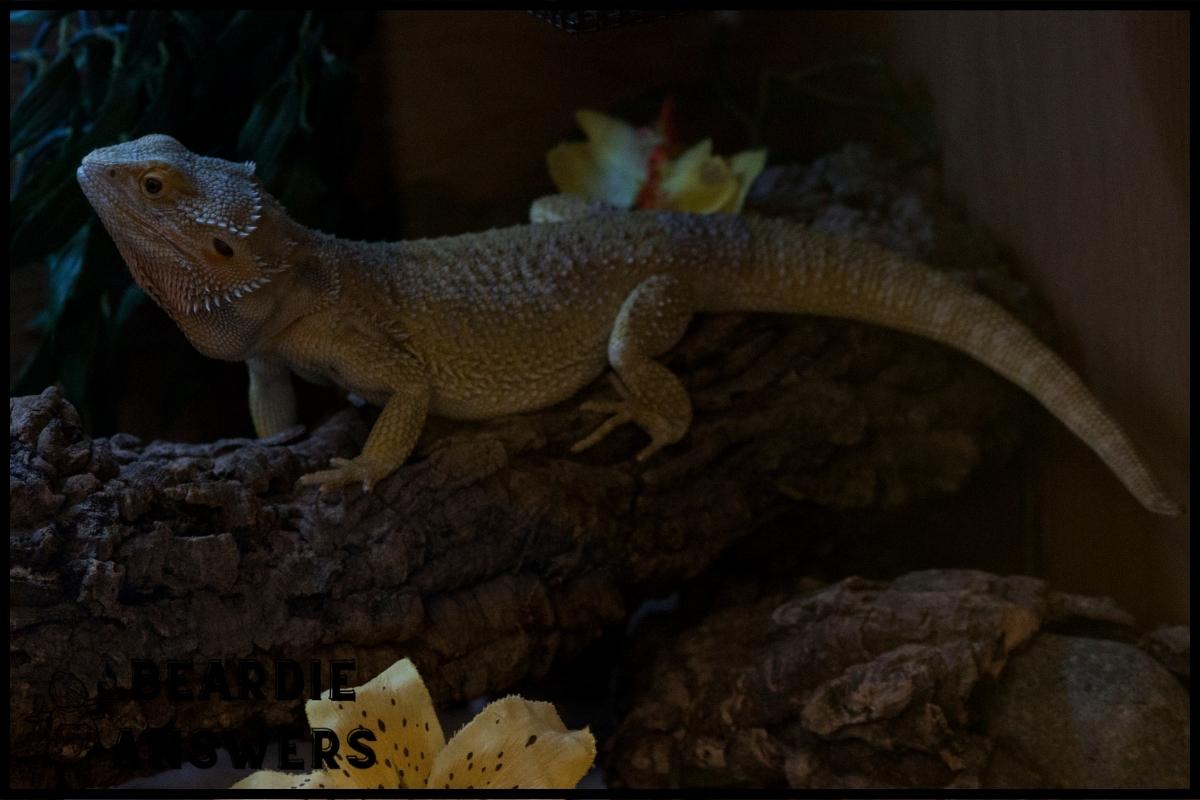Gendering a bearded dragon can be done through various methods, including examining their femoral pores and tail shape or through DNA testing. Male bearded dragons have larger and more prominent femoral pores than females, while females tend to have shorter and wider tails than males. However, the most reliable way to determine the gender of your bearded dragon is through DNA testing, which can be done through a veterinarian.
What You'll Learn
Examining Femoral Pores
When it comes to gender identification, examining the bearded dragon’s femoral pores is essential. Femoral pores are small openings found on either side of a bearded dragon’s thigh near the vent that can help identify its sex. It takes some practice to get used to looking for these anatomical basics but with time and experience you will be able to determine male from female dragons more quickly.
Here are three key points when examining femoral pores:
- Female bearded dragons have smaller and less obvious femoral pores than males
- The number of scales in between each pore may vary depending on the individual reptile
- Males tend to have larger, rounder, and darker colored femoral pores than females
Knowing how to make out the crucial gender differences between male and female bearded dragons through their anatomy is important for any responsible owner or breeder. As such, understanding all aspects of your pet’s body structure, including its tail shape, is integral in successful caretaking and breeding endeavors – which we’ll explore further in our next section!
Identifying Tail Shape
When it comes to gender differences in bearded dragons, there is no greater visual signifier than tail shape. It’s like a giant billboard on their backs!
Male and female bearded dragon tails are so dramatically different that you can spot the difference from across a room. The male’s tail is wider than his body length, while the female’s is much more narrow and delicate – like a twig compared to an oak tree!
If size comparison isn’t enough of an indicator for you, then look at the overall structure of each sex’s tail; males have long ridges down the full length of their tails whereas females don’t.
It’s important to remember when examining your pet reptile’s tail: never handle them too roughly or pull on their skin as this could cause significant damage. Instead, try looking closely at your dragon while they’re perched comfortably on one hand with its head facing away from you. This way you’ll be able to get up close and personal with all those wonderful details without endangering your pet in any way.
If you still can’t tell which gender your beloved beast belongs to after carefully inspecting their tail structure, then consider collecting a dna sample for testing – but we’ll cover that process separately another time.
For now, let us move onto understanding how to accurately identify femoral pores…
Collecting A Dna Sample
Let’s talk about collecting a DNA sample;first, we’ll cover collecting the sample, then preparing it, and lastly, where to store it.
Collecting A Sample
Collecting a DNA sample from your beloved bearded dragon can seem daunting, but with the right housing requirements and diet needs it doesn’t have to be!
To properly collect a sample for testing you’ll need an enclosure that is large enough to accommodate both yourself and your pet.
Diet-wise, make sure they are well fed before taking the sample as this will help ensure accurate results.
Finally, use gauze or cotton swabs moistened in warm water to take a small tissue/scales sample on their tail or body.
With these steps taken care of, gender identification shouldn’t be too difficult!
Preparing A Sample
Once you have met the habitat requirements and dietary needs for your bearded dragon, it’s time to prepare a sample for testing.
You’ll need gauze or cotton swabs moistened in warm water to take a small tissue/scales sample from their tail or body.
Make sure they are well fed before taking the sample as this will help ensure accurate results.
Once all of these steps are complete, gender identification should be easy!
Sending The Sample For Testing
Once the DNA sample is collected, it’s time to send it off for testing. The cost associated with sending a sample varies depending on what type of test you’re ordering and which lab you use. In most cases, the sample preparation costs are included in the overall sending fee.
Before shipping the sample, be sure to double-check that all necessary forms have been filled out correctly and completely. Any errors could lead to delays or even incorrect results.
When ready, package up the sample securely and ship it according to the directions provided by your chosen laboratory. It’s important to note that some labs may require specific types of packaging when handling biological samples, so make sure to follow their instructions exactly. You’ll also need to provide all relevant contact information before submitting payment and shipping your sample.
After sending off the DNA sample, it’s just a matter of waiting until your results come back from the laboratory. With any luck, they should arrive soon and provide valuable insight into determining gender in bearded dragons. From here, we can move onto interpreting these results accurately and efficiently.
Interpreting Results
Visualizing the differences between male and female bearded dragons can be an interesting endeavor. When observing a bearded dragon, many people might not know how to tell if it’s a male or female. But with some basic knowledge about anatomical differences, sex hormones, and other factors, you can accurately identify the gender of your pet reptile.
The first step in determining the gender of a bearded dragon is to examine its femoral pores and tail shape. The number and size of these pores on a bearded dragon are different for males and females; males typically have larger femoral pores that appear as two rows running down their thighs. Additionally, female bearded dragons usually have skinnier tails than males.
Another way to determine the gender of a bearded dragon is through DNA testing, which involves examining chromosomes within cells from blood samples taken from the animal’s mouth membrane. This method is more reliable and accurate than visual examination alone but requires expensive laboratory tests.
Regardless of which method you choose, understanding what makes each gender unique will help you better care for your beloved lizard companion!
Conclusion
When it comes to identifying the gender of a bearded dragon, there is no one-size-fits-all approach.
Examining femoral pores and tail shape can help you make an initial guess, but true certainty requires DNA testing.
Sending in your sample for testing may seem intimidating at first, but when you get the results back, there’s nothing quite like that feeling of knowing exactly what kind of pet you have!
With this knowledge, breeders and owners alike can take better care of their beloved dragons by providing them with the best possible environment and diet suited to their individual needs.

Hi! My name is Bryan, I am the “one behind the words” here are BeardieAnswers.com. I believe that providing quality care and nutrition is the best way to ensure the health of your pet. Every beardie is special and deserves the best care and attention. If you have questions about your bearded dragon, please don’t hesitate to ask! View My Full Author Page




